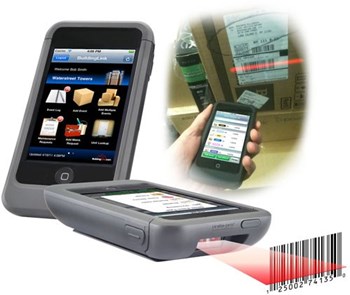
When it comes to building management and operations, is your property manager working harder, or smarter? Technology systems designed specifically for property management and building operations are becoming more popular, allowing your property manager and your building's entire staff to work more effectively and efficiently.
Jacklyn Auerbach, the assistant to the general manager in a 200-unit condo building in New York City, wanted a way to streamline processes in terms of record-keeping, whether it be tracking packages, managing resident information, permission, instructions, and authorizations, and issuing notifications. “We wanted a one-stop-shop,” explains Auerbach. “We installed BuildingLink in 2009 and we were able to move away from Word documents and Outlook cards. Everything can log in to the system and see the same things, depending on their permissions of course. We use if for notifications—all of our emails, updates, any notices about building closures or maintenance-related items—all of that gets communicated to the residents through BuildingLink.”
The system has made it much easier to make sure that every resident is aware of updates and notices for the building. “When we used to use paper notifications, residents would say “Hey, I missed this notice, or I didn't get that notice,' and that problem has been eliminated now,” says Auerbach. “In today's day and age, everyone has email, and everyone is on their device checking their email pretty frequently, so nobody misses anything now.” The few units that don't have email access can be noted in the system, so that Auerbach can automatically generate paper copies of the email notification for those specific units to be placed in their mailboxes.
William Bonet, resident manager and operating engineer for 100 condo units across a three-building compound in New York City, has used BuildingLink in his building since it opened in 2004. “Dealing with packages and notifications is so much more efficient with BuildingLink,” says Bonet. “Doormen can immediately send an email to residents to notify them that a package has arrived.” Bonet's building also uses BuildingLink as a punch clock for payroll. “All of my employees log in through the system with a fingerprint ID,” says Bonet. “I can print out the history of an employee going back a year and look for patterns of lateness or absences or things of that nature.”
BuildingLink also provides a centralized calendar and scheduling system for building managers. “Anything that's going on in terms of building improvements and maintenance goes onto the calendar,”notes Auerbach, “so everyone can see that we have an HVAC shut down, or a water shut down.” This system has cut down on confusion when a resident calls to inquire about an issue in the building. “Nobody is stuck scrambling to figure out what the answer is,” says Auerbach. “Whoever answers the call can look at the calendar and say why the issue is happening. Everyone is watching the store.”
Taking Smart to the Next Level
BuildingLink streamlines communication between the building manager and residents. But what if you could streamline the communication between the building manager and the building itself? “I live and work in the building,” says Bonet. “When you run a residential building, you're basically married to the building. I'm always concerned about my mechanical equipment, and I'm constantly monitoring what's going on, especially in the evenings. In the past, to monitor these systems, I'd have to go down to the heating plant and the chiller plant every night. And unfortunately when there was a major issue, it was usually too late.”
Now Bonet's building is participating in the beta launch for Junction, a high-tech system of sensors and monitors that gather data on a building's mechanical systems and produces intelligence. Each Junction box monitors humidity, carbon monoxide, smoke, natural gas, temperature, air quality, flood / leaks, contact temperatures, problematic noise, and includes a 1080p high definition motion-detecting camera that records images and video. The box collects data over time, and sends alerts when readings are outside of set ranges, or problematic noise or flooding is detected. “We already have backup systems and a computerized building maintenance system in place,” remarks Bonet, “but Junction serves as an early detection system for any issues that arise. We no longer have residents calling at 5 a.m. to say that they have no heat, because Junction already sent us a signal saying that the boiler went on flame failure.”
The Junction box has completely transformed the way Bonet monitors his building's equipment. “I've been in this business for 33 years, and honestly I don't think I can run a building anymore without having a Junction box in place,” says Bonet. “I can see what's going on in my boiler room at 10 p.m. just by picking up my phone and logging into the dashboard. I can log into the camera and see that my handyman is at work doing his readings of the building systems. And this is all from a system that cost less than the flowers in our lobby.”
Jennifer Welch is a staff writer at The Cooperator.






Leave a Comment